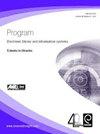以研究人员为中心的新方法——集成IR与CRIS
Q Social Sciences
Program-Electronic Library and Information Systems
Pub Date : 2017-09-13
DOI:10.1108/PROG-04-2017-0026
引用次数: 15
摘要
目的本文的目的是为大学提供一个构建机构信息系统(IIS)的解决方案,使其将机构知识库(IR)的功能与当前研究信息系统(CRIS)的功能相结合。本文介绍了华沙理工大学(WUT)实现的一个系统的功能,该系统解决了这两种系统类型的要求。此外,还介绍了旨在提供对系统受益者有吸引力的功能的应用人工智能技术。设计/方法论/方法作者回顾了IIS的各种方法,分析了研究人员在将CRIS与IR相结合时观察到的问题,并展示了如何在集成各种功能的系统中解决这些问题。在此基础上,作者为一个学术IIS实现了Ω-ΨR(OMEGA-PSIR)软件,该软件集成了两种系统类型的需求,并将其部署在WUT上。研究结果表明,尽管经典知识库是CRIS/IR系统的重要组成部分,但该解决方案的基本价值在于为“研究管理”提供分析工具。基于OMEGA-PSIR的例子,作者还介绍了以研究人员为中心的方法如何影响学术界的接受率。它还展示了以研究人员为中心的方法如何从整合IR和CRIS的冲突功能中获得优势。实践意义本文弥合了学术机构IIS领域理论与实践之间的差距。它建设性地讨论了机构IR的作用,并指导如何开发一个结合CRIS和IR功能的系统,以及如何通过使系统研究人员为中心来提高IIS对用户的吸引力。独创性/价值对IIS的各种方法的调查是独一无二的。以研究为中心的方法及其在OMEGA-PSIR系统中的实现是独创的。在WUT部署该软件的经验教训对计划安装IR/CRIS解决方案的机构具有重要价值。对系统可用性进行了调查研究,表明了该方法的实用性。本文章由计算机程序翻译,如有差异,请以英文原文为准。
Integrating IR with CRIS - a novel researcher-centric approach
Purpose
The purpose of this paper is to present a solution for building an institutional information system (IIS) for the university, so that it combines the functionality of institutional repository (IR) with the functionality of current research information system (CRIS). The paper presents functionality of a system that has been implemented at Warsaw University of Technology (WUT), which solves the requirements of both system types. In addition, applied AI technologies aiming at providing features attractive for the system beneficiaries are presented.
Design/methodology/approach
The authors have reviewed various approaches to IIS, analyzed the problems observed by researchers in combining CRIS with IR, and have shown how the problems can be solved within a system that integrates various functionalities. Based on this analysis, the authors have implemented software Ω-ΨR (OMEGA-PSIR) for an academic IIS, which integrates requirements of both system types, and then deployed it at WUT.
Findings
It is shown that although a classical repository is an important part of the CRIS/IR system, the essential value of the solution is in providing analytical tools for “research management.” Based on the example of OMEGA-PSIR, the authors have also presented how the researcher-centric approach influences the acceptance rate of the academic community. It is also shown how the researcher-centric approach can take advantage from integrating the conflicting functionalities of IR and CRIS.
Practical implications
The paper bridges the gap between theory and practice in the area of IIS for academic institutions. It constructively discusses the role of institutional IR and it provides guides how to develop a system combining functionalities of CRIS and IR, as well as how to make IIS more attractive for the users by making the system researcher centric.
Originality/value
The survey of various approaches to IIS is unique. The research-centric approach and its implementation within OMEGA-PSIR system are original. Lessons learned from deploying the software at the WUT are of great value for institutions planning to install IR/CRIS solutions. A survey research concerning the system usability is provided, showing practical usefulness of the proposed approach.
求助全文
通过发布文献求助,成功后即可免费获取论文全文。
去求助
来源期刊

Program-Electronic Library and Information Systems
工程技术-计算机:信息系统
CiteScore
1.30
自引率
0.00%
发文量
0
审稿时长
>12 weeks
期刊介绍:
■Automation of library and information services ■Storage and retrieval of all forms of electronic information ■Delivery of information to end users ■Database design and management ■Techniques for storing and distributing information ■Networking and communications technology ■The Internet ■User interface design ■Procurement of systems ■User training and support ■System evaluation
 求助内容:
求助内容: 应助结果提醒方式:
应助结果提醒方式:


